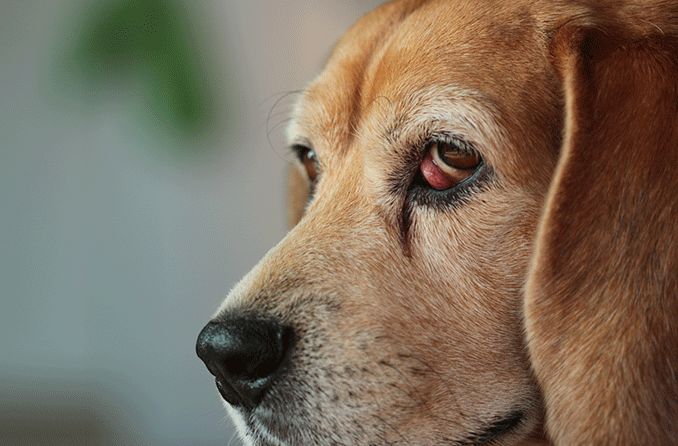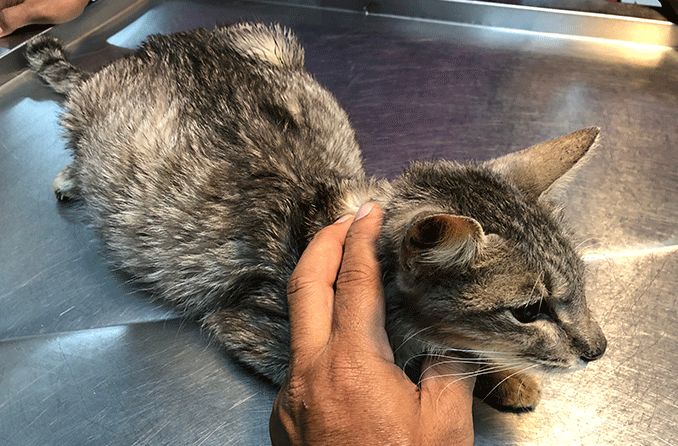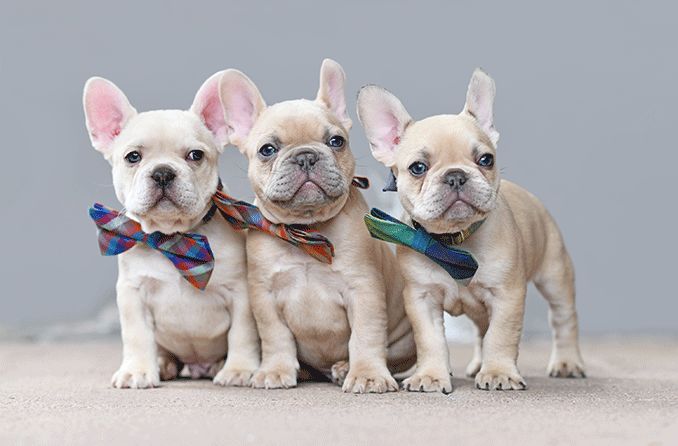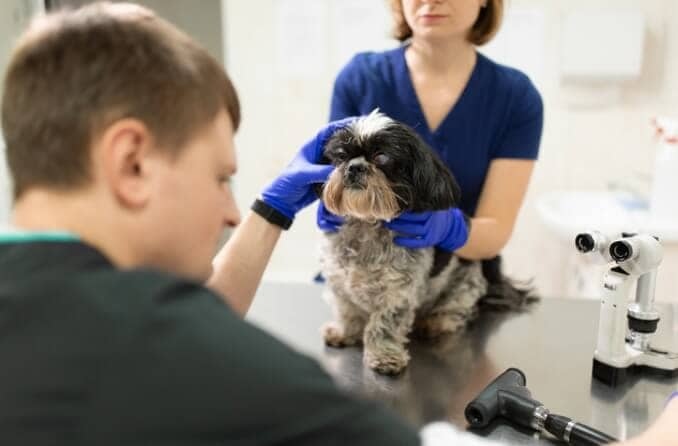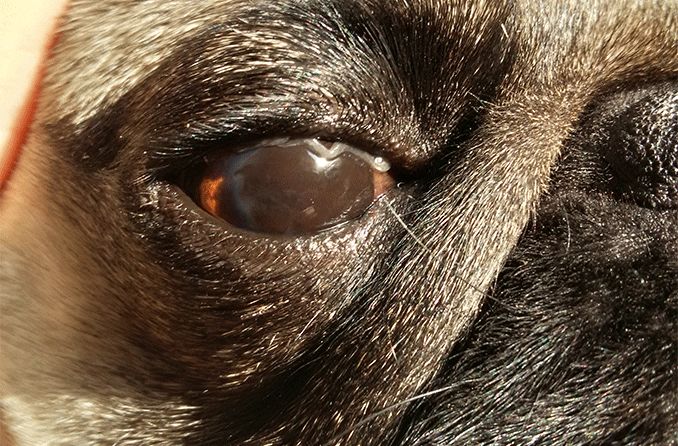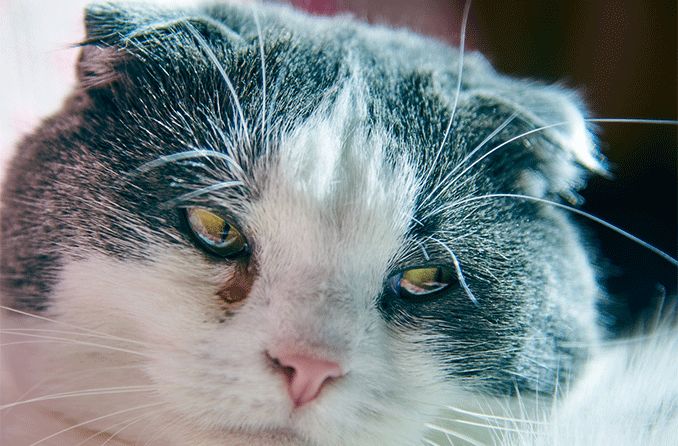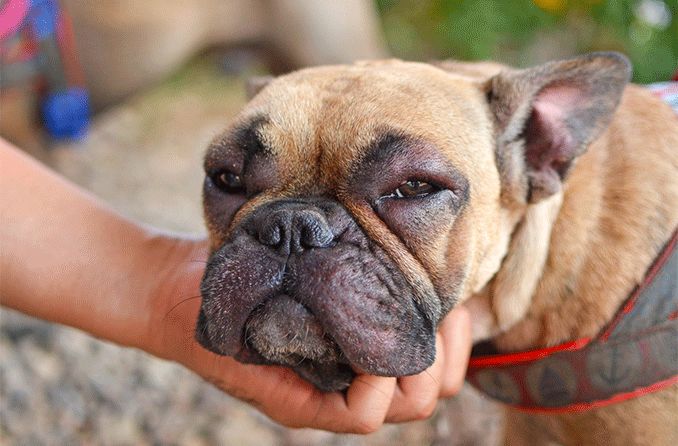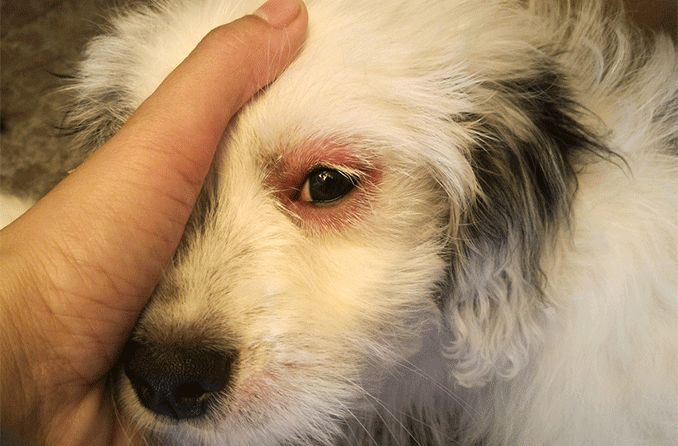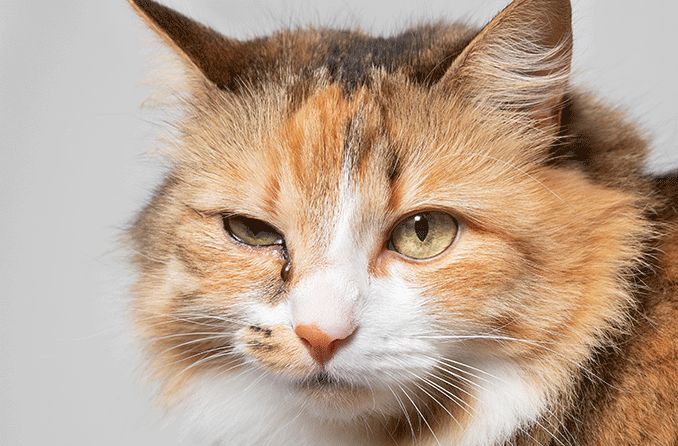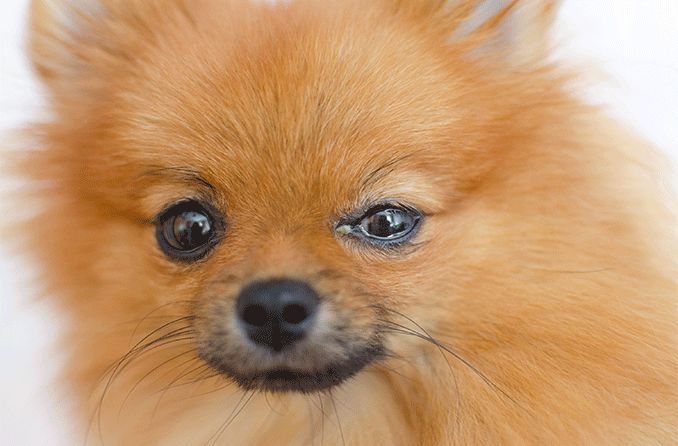What causes cherry eye in dogs?
Cherry eye refers to a prolapsed gland in a dog’s third eyelid. This is due to its swollen, bright-red appearance when inflamed. The cause of this prolapsed gland isn’t always known. But one likely cause of cherry eye is a weak attachment between the gland and the lower rim of the eye socket.
This weak attachment can rupture and cause the gland to protrude from the inner corner of the eye.
Some of the dog breeds that are most commonly impacted by cherry eye tend to have squished-in faces and shallow eye sockets. They are called brachycephalic breeds and are similar to the Persian and Burmese breeds in cats. Dog breeds that are most likely to suffer from third eyelid prolapse include:
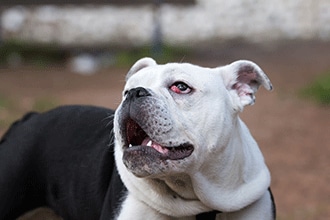
- Beagles
- Bloodhounds
- Boston Terriers
- Bulldogs
- Cocker Spaniels
- Lhasa Apsos
- Poodles
- Shih Tzus
- Pugs
Cherry eye can look like trauma because of the red and swollen appearance of the gland. While it’s not as painful as it looks, this condition still requires immediate veterinary attention.
Cherry eye can cause discomfort if not treated as soon as possible. Because the gland begins to atrophy if it is not treated, cherry eye can lead to dry eye syndrome, irritation and, potentially, keratoconjunctivitis. Ocular discharge may occur in dogs who develop conjunctivitis due to cherry eye.
FURTHER READING: What causes eye discharge in dogs?
What is the purpose of the third eyelid?
The third eyelid, or nictitating membrane, of most mammals is located inside of the lower eyelid and in the inner corner of the eye. One of its primary functions in dogs is to provide additional protection to the eye.
If debris or outside irritants come in contact with the eye, the third eyelid protects the cornea and spares it from taking the brunt of the damage. A gland in the nictitating membrane produces around 30% to 50% of the aqueous tear film that keeps the eyes moist, which helps to prevent dry eye syndrome and remove irritants.
Symptoms of cherry eye in dogs
Cherry eye can be very noticeable. Third eyelid prolapse in dogs usually appears suddenly.
A healthy nictitating membrane is not readily visible and has a pale pink appearance. But when the gland of the third eyelid prolapses (or “pops out” of place), it becomes red and swollen. It may cover a portion of the corneal surface as well.
The most obvious sign is seeing inflamed tissue in the corner of the lower eyelid. If you think your dog might have cherry eye, the first step is to call your vet.
Cherry eye is not a condition that will resolve on its own. It’s important to have cherry eye treated by a veterinary professional as soon as possible to maintain your pet’s comfort and preserve their eye health.
Cherry eye is most common in dogs that are under two years old.
LEARN MORE: What causes red eyes in dogs?
How to treat cherry eye in dogs
Corrective surgery is the most effective option to treat cherry eye in dogs.
In the past, the third eyelid was removed to address a prolapse. However, this often led to dry eye and other complications later in life. Now, the gland of the third eyelid is only surgically removed if there’s a risk of cancer, if it no longer functions or if there is severe trauma.
Rather than removing the gland of the third eyelid, it is repaired by being put back in place. This can be achieved with the mucosal pocket technique.
- First, general anesthesia is administered to the pet. This is necessary because the eye is a small, delicate area.
- Next, a small pocket is made in the corner of the eye.
- The exposed gland is then relocated inside of the pocket.
- Finally, the new pocket is stitched together using absorbable stitches.
The orbital rim technique may also be used. This method uses permanent stitches that secure the eyelid to the bone that surrounds the eye.
Aftercare and recovery following cherry eye treatment
Recovery after surgery for cherry eye in dogs takes one to two weeks. At this point, most of the post-surgery inflammation should be resolved.
During this period, your pet may be given pain medicine, antibiotics and either eye drops or a topical ointment. These will help manage discomfort and reduce the risk of infection. Exercise should be limited as your pet recovers from their surgery.
Surgery for cherry eye is around 90% effective. However, there is a chance that the gland can pop out again and require a secondary treatment. Some complications that can come from cherry eye treatment are:
- Infection
- Cysts or ulcers on the cornea or at the treatment site
- Bleeding
- Additional prolapse
Following your vet’s instructions carefully for your pet will reduce the chance of complications occurring post-surgery.
When should I see my vet?
Dogs are known as “man’s best friend” for many reasons. They’re loving, friendly and loyal animals that provide companionship for people of all ages. We become emotionally attached to our pets and can even sometimes sense when something is off with their health, mood or well-being.
If you suddenly notice a red, swollen bump coming out of the corner of your dog’s eye, it can definitely be concerning. The immediate protocol for dogs with cherry eye is to receive veterinary attention as soon as possible.
A prolapsed third eyelid is not a deadly condition, but it can lead to dry eyes, irritation and discomfort. A trained veterinarian will surgically treat the issue and provide pet owners with aftercare medicine and instructions.
If you have noticed anything abnormal about your dog’s eyes, reach out and get veterinary attention as soon as possible.
